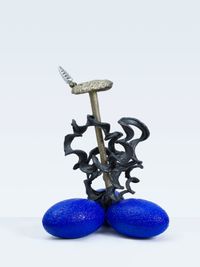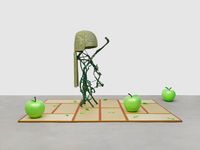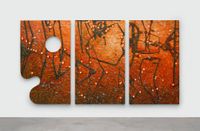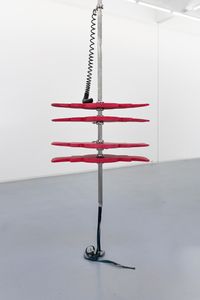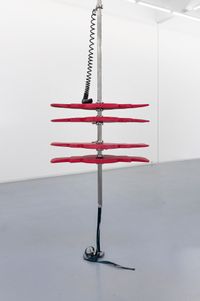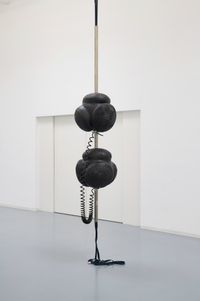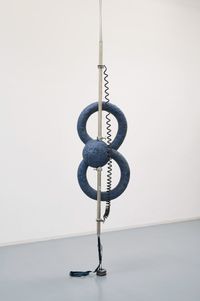Beijing-based artist Guan Xiao investigates cultural shifts over time and between regions to highlight the material associations that inform the reading of art objects and traditions.
Read MoreBorn in Chongqing, China, Guan wanted a more interdisciplinary education than what was available at Chinese academies at the time, which led her to study Film Directing at the Communication University of China in Beijing, where she completed her BA in 2006.
Guan Xiao's sculptures, videos, and installations often juxtapose materials, traditions, and propositions to create new contexts for viewing, generating new understandings of historical objects and the world around us.
Guan's sculptural assemblages combine new and found objects into futuristic totems or contemporary relics that do not adhere to any specific visual lexicon, culture, or time period, resulting in works that resist simple interpretation.
Material and language are placed in active dissonance, opposing traditional conventions of one informing the other, in the neon yellow sculpture Messenger (2020)—a freestanding cane shape adorned with metal spikes on a pewter grey stand, the whole made of bronze, lacquer, motorcycle parts, and artificial flowers.
This allusion to how we look, see, and understand is made more explicit in the sculpture You Have to Have EYES (2020), for which two metallic tyre rims frame a rock-like form, essentially reflecting the eyes that look at the artwork to emphasise the visual and textual cues that shape our understanding of the world and art objects.
As with her sculptures, Guan's video works combine self-made footage with material collected from YouTube, DVDs, and home videos, inviting new understandings of existing materials by presenting them outside their original contexts and associations.
Set against an upbeat soundtrack and home videos filmed by tourists at the Galleria dell'Accademia in Florence, the three-channel musical satire David (2013) shows the artist singing a duet with collaborator Yu Honglei about the mindless consumption of cultural images, referring to the mass commodification of Michelangelo's artwork.
Recovering contemporary channels of display and distribution, Guan demonstrates how the value of the Renaissance masterpiece is rendered insignificant against the mass propagation of its image, integrated within pop culture.
'My installations can be described as different components—including the titles,' the artist told Ocula Magazine in 2016. Through her installations, Guan states that she seeks to 'describe a context rather than prove a subject.'
Using photography to refer to secondary frames of perception that offer fixed assumptions about history and its objects, The Documentary: Geocentric Puncture (2012) introduces an element of uncertainty to historical understandings by evoking shifting material perceptions over time.
Shown at the New Museum Triennial in 2015, the standing triptych, which the artist deemed a 'remarkable turning point' in her practice, included historical artefacts selected for their association with traditional forms. These included items such as an Easter Island Moai statue set beside camera tripods, behind which freestanding screens were erected with eye-catching patterns, alluding to the surface interpretations that frame our understandings of the past.
Guan was nominated for the Hugo Boss Award in 2015.
Guan Xiao's works have been shown widely in Europe, Asia, the U.K., and the United States.
Solo exhibitions include Contemporary Art Museum St. Louis (2019); chi K11 art museum, Shanghai (2016); Institute of Contemporary Arts, London (2016); and Jeu de Paume, Paris (2016).
Group exhibitions include 57th Venice Biennale (2017); Long Museum, Shanghai (2016); New Museum, New York (2015); and Victoria and Albert Museum, London (2008).
The artist's Instagram can be found here.
Elaine YJ Zheng | Ocula | 2022
